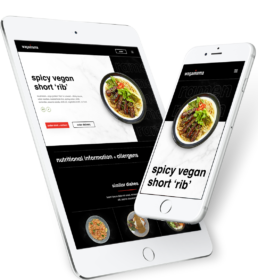Leading the strategic redesign of Wagamama’s digital experience to align with its refreshed brand vision.
Research & strategic analysis
Every decision, backed by research and measured for success.
We began by analysing the competitive landscape to uncover market gaps and opportunities for differentiation. This research formed the bedrock of our strategy, fueling collaborative workshops where our cross-functional team translated insights into tangible user flows and creative concepts.
To ground our design in tangible outcomes, we established a robust measurement framework. By tracking both business KPIs (conversion rates, order value) and customer experience metrics (engagement, satisfaction), we ensured every design decision was purposeful and directly contributed to measurable success.
Product design
We began by redesigning the information architecture, simplifying navigation and streamlining the order process to create a more intuitive user journey. From there, we moved from low-fidelity wireframes into high-fidelity prototypes, using our initial pitch concepts as a creative springboard.
The goal was to develop a modern and engaging theme that remained true to the brand’s familiar aesthetic. Throughout the process, we used rigorous user testing and stakeholder feedback to validate every decision, ensuring the final product met both business goals and us
We brought the new digital experience to life through a compelling vision video, helping Wagamama communicate their vision and creative direction within their organisation.
Design system
We developed a comprehensive design system to ensure brand consistency, scalability, and efficiency across all digital touchpoints. This single source of truth unified core brand elements like logos and typography, an extensive library of reusable components, and global rules for grids and spacing.
Built with accessibility at its core, the system includes WCAG-compliant elements, enabling the team to create inclusive, on-brand experiences quickly and reliably for years to come.
The Results
The redesign successfully transformed Wagamama’s digital presence - boosting online orders and customer satisfaction whilst reflecting its ethos of fresh, nourishing, and soulful dining.
21%
increase in online order conversion rate
7%
increase in CSAT scores
5%
increase in loyalty programme engagement










